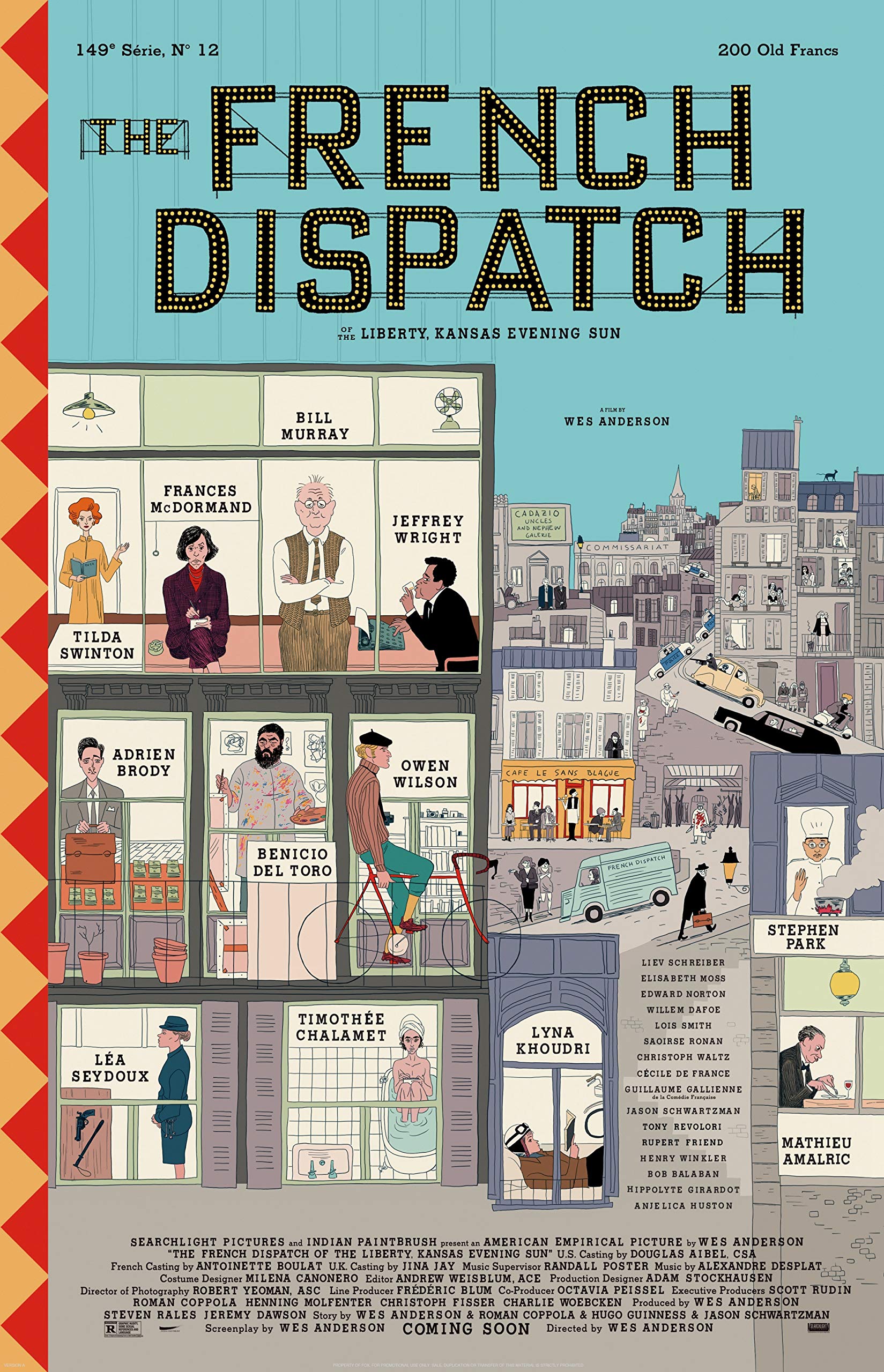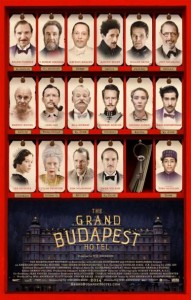The French Dispatch
Posted on October 20, 2021 at 10:00 am
B| Lowest Recommended Age: | Mature High Schooler |
| MPAA Rating: | Rated R for language, graphic nudity, and some sexual references |
| Profanity: | Some strong language |
| Alcohol/ Drugs: | Drinking, smoking |
| Violence/ Scariness: | Peril and violence including kidnapping of a child and a shoot-out, student uprising |
| Diversity Issues: | None |
| Date Released to Theaters: | October 22, 2021 |

Anderson’s exquisitely assembled films are more Cornell Box or M.C. Escher puzzle than narrative, the props and settings more important than the characters or storyline. I enjoy the attention to detail and the whimsy of his films, occasionally spiced with moments of, sorry, il faut parler français por un instant, “choquer le bourgeois.” I love his repertory cast of actors, who are always clearly having a blast and not quite winking at the audience. But I also find them claustrophobic, and overly precious in both senses of the word, speaking to those who feel smug about understanding them in a way they believe ordinary, less sophisticated people can not. Like that French I used just now, which by the way means: “it is necessary to speak French for a minute to ‘shock the ordinary people.'” See? It works just fine en englais. Anderson seems to aim for whimsy but one thing whimsy cannot be is heavy-handed.
Anderson has found the idea subject for “The French Dispatch,” a real-life publication almost as precious (still in both senses of the word) as his fantasized characters and environments, The New Yorker, and in particular the New Yorker of the romanticized era of the mid-20th century. There is a long list of New Yorker writers and editors who are listed in the end credits, including the two legendary editors, co-founder and editor from 1925-1951 Harold Ross and William Shawn, editor from 1952-1987 (and father of writer/actor Wallace Shawn).
The film is both an anthology and a retrospective, again Anderson’s preferred matryoshka Russian nesting doll narrative structure. Is with the death of the title publication’s founder and editor, Arthur Howitzer Jr. (Bill Murray), a “Citizen Kane” style set-up that continues with peeks inside some of the magazine’s classic stories, delivered as chapters. The setting is the fictional French town of “Ennui-sur-Blasé” (ennui and blasé both French words adopted by English speakers meaning world-weary and bored). The premise is a look inside an issue of the magazine, which, following the orders of its founder, will cease publication after his death. In another layer of matryoskha, The New Yorker reported that the parallels between its real-life articles and the film include: Herbsaint Sazerac (Owen Wilson), inspired by writer Joseph Mitchell. Julian Cadazio (Adrien Brody), inspired by Lord Duveen, the subject of a 1951 six-part New Yorker profile by S. N. Behrman. Roebuck Wright (Jeffrey Wright), inspired by James Baldwin and A.J. Liebling. Lucinda Krementz (Frances McDormand), inspired by Mavis Gallant, who wrote a two-part 1968 piece on the student uprisings in France.
There are stories within stories as we see the writers discuss what they have written. J. K. L. Berensen (Tilda Swinton, fabulously, of course) delivers a lecture to an audience with slides showing the work of an acclaimed artist (Benecio del Toro) who happens to be criminally insane and confined to prison, where his muse and nude model is one of the guards (Léa Seydoux). Lucinda Krementz (Frances McDormand) is a steely observer of student unrest who gets involved with one of the young leaders (Timothée Chalamet). The strongest of the stories has Jeffrey Wright as Roebuck Wright, who can perfectly recall every word he has written and is invited by a television interviewer (Liev Schreiber) to recite from memory his very convoluted story about the kidnapping of young boy. Wright’s melodious, slightly husky voice in Anderson’s near-monotone style set opposite a story of grotesque twists and turns tilts toward precious in the second sense of the word, but the sheer charisma of the design, with Anderson’s signature dollhouse-style cutaways, has some of the first meaning of the word as well.
Parents should know that this film has sexual references and non-explicit situations, some strong language, and some peril and violence, including a kidnapping, poison, and a shoot-out with many characters injured and killed.
Family discussion: Which of the stories did you like best?
If you like this, try: “The Life Acquatic with Steve Zissou,” “The Royal Tennenbaums,” and the books about the New Yorker by James Thurber and Brendan Gill




